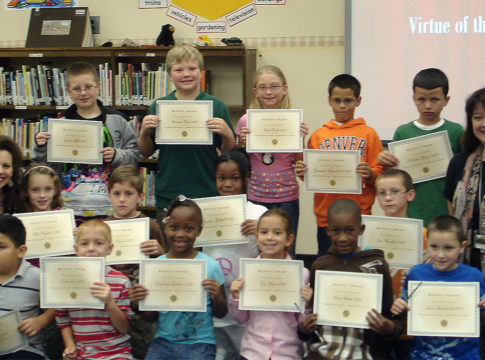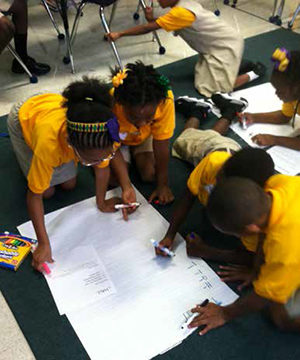Private education as we have known it is on its way out, at both the K-12 and postsecondary levels. At the very least, it”s headed for dramatic shrinkage, save for a handful of places and circumstances, to be replaced by a very different set of institutional, governance, financing, and education-delivery mechanisms.
Consider today”s realities. Private K-12 enrollments are shrinking — by almost 13 percent from 2000 to 2010. Catholic schools are closing right and left. The Archdiocese of Philadelphia, for example, announced in January that 44 of its 156 elementary will cease operations next month. (A few later won reprieves.) In addition, many independent schools (day schools and especially boarding schools) are having trouble filling their seats — at least, filling them with their customary clientele of tuition-paying American students. Traditional nonprofit private colleges are also challenged to fill their classroom seats and dorms, to which they”re responding by heavily discounting their tuitions and fees for more and more students.
Meanwhile, charter school enrollments are booming across the land. The charter share of the primary-secondary population is five percent nationally and north of twenty percent in 25 major cities. “Massive open online courses” (MOOCs) are booming, too, and online degree and certificate options proliferating. Public-sector college and university enrollments remain strong and now educate three students out of four. The “proprietary” (i.e. for-profit) sector of postsecondary education is doing okay, despite its tortured relationship with federal financial aid.
What”s really happening here are big structural changes across the industry as the traditional model of private education — at both levels — becomes unaffordable, unnecessary, or both, and as more viable options for students and families present themselves. While unemployment remains high, the marginal advantage of investing thirty or fifty thousand dollars a year in private schooling is diminishing, particularly when those dollars are invested in low-selectivity, lower-status private institutions. Recent analyses by AIR”s Mark Schneider and Brookings”s Stephanie Owen and Isabel Sawhill make it explicit:
People who attended the most selective private schools [colleges/universities] have a lifetime earnings premium of over $620,000. …For those who attended a minimally selective or open-admission private school, the premium is only a third of that….[P]ublic schools tend to have higher ROIs than private schools, and more selective schools offer higher returns than less selective ones.
Alterations in the housing market may also play a role where K-12 private schools are concerned. Not long ago, one could live in a nice house in the city for a lot less than a nice house in the suburbs — and spend the money saved on private schooling for one”s kids. In gentrifying cities, however, that”s no longer so. Now one must pay more for a house in the city plus private school for the children. Thus, more parents are saying, “Forget it, I”ll go public — provided the public sector can be made to supply me with a good charter or magnet school, or a virtual-education supplement to a decent neighborhood school.”
Three factors keep all these changes from being more visible and talked about.
First, of course, they”re gradual, and thus (proverbially) difficult to perceive. Second, it”s not in the interest of private schools or colleges to acknowledge that they have a problem — lest it create the educational equivalent of a run on the bank, with clients fleeing for fear of being abandoned after a sudden collapse. Much of the allure of private schools, after all, is based on their reputations, which they work hard to sustain. Hence they maintain a brave front while quietly shrinking, discounting — and recruiting full-pay students from wealthy families in other lands, particularly in Asia.
Third, elite private institutions are doing just fine, many besieged by more applicants than ever before. The wealthiest Americans can easily afford them and are ever more determined to secure for their children the advantages that come with attending them. And at the K-12 level, a disproportionate fraction of those wealthy people live in major cities where the public school options are unappealing. So we”re not going to see an enrollment crisis anytime soon at Brown, Amherst, or Duke, nor at Andover, Sidwell Friends, or Trinity. Indeed, New York”s new is able to fill its classes with families willing and able to pay its staggering $43,000 per annum.
Because these elite schools and colleges are also highly visible — and where the “chattering classes” want (and can afford) to enroll their own daughters and sons — they create a façade of private-sector vitality. Behind it, however, like the Wizard of Oz”s curtain and Potemkin”s building facades, there is much weakness, a weakness that probably afflicts the vast majority of today”s private schools and colleges.
Is this situation reversible? And should it be a matter of concern for education reformers and policymakers?
Most other modern countries have essentially melded their private-education sectors into their systems of public financing — and have accepted the tradeoffs that accompany such financing, namely government regulation of curriculum, teacher credentialing, student admissions and more. We can see early examples of this in the U.S., too, as vouchers gradually spread and private schools accommodate themselves to the state testing regimes and other rules that come with such financing.
This is apt to be a limited remedy, however, due to American church-state entanglement anxieties that other countries don”t share; prohibitions in many state constitutions that make such public financing difficult or impossible; and our conviction that what”s valuable about private education is its freedom to be different. The policy dilemma is whether different-ness is precious enough, if with it comes gradual erosion of the “different” sector itself.
One can also fairly ask whether U.S. private schools and colleges are really all that different from their public-sector counterparts. In practice, their education-delivery model is practically indistinguishable, save for the accoutrements that the wealthiest of them can buy (trips to faraway lands, nifty technology, tiny classes, etc). There is, however, a difference where religion is concerned: Just 22.8 percent of K-12 private-school students are in secular schools, while about 32 percent of all private college students are enrolled in religiously affiliated institutions. In less prosperous schools and colleges, religion may, at day”s end, be the only real difference between public and private — and the return on that investment, while perhaps significant, cannot be easily measured.
Changing the delivery system might serve to make private education both more affordable and more different, and signs of such change are already evident, but rarely in the traditional nonprofit portions of the private sector. Instead, the boldest innovations are coming from entrepreneurs, most of them profit-seeking and most of them delivering instruction (and more) via technology rather than face-to-face in brick buildings that are open just six or eight hours a day for 180 or so days a year.
Or elite universities — the ones that are still thriving and would continue to thrive without these changes — are, themselves, innovating — mostly for students other than their own. The MITs and Stanfords are teaming up with the Courseras and Udacitys — educational technology companies specializing in online education — to offer online courses to thousands. Udacity has put a toe into the K-12 waters, both by partnering with local school systems and by inviting students to enroll directly in its college-level courses. Nor is it likely to stop there. Indeed, I expect “St. Paul”s math” and “Dalton“s literature” in time to echo across the land, too. If current trends continue, we”re going to see a bi-modal system develop, with public schools (including charter schools) and ultra-elite private schools monopolizing the education space as the plethora of smaller private and parochial schools that once fell between them gradually fade away.
Can run-of-the-mill private schools and colleges reboot? Can they change themselves — including both their delivery systems and their cost structures — enough to brighten their own futures? I wouldn”t bet a year”s tuition on it.
—Chester E. Finn, Jr.
This post originally appeared in The Atlantic.





